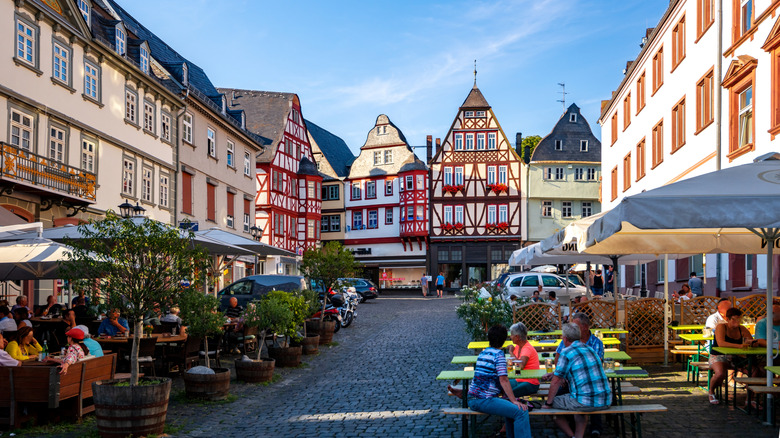Overshadowed By Frankfurt Is A Nearby Underrated German Town Bursting With Medieval Charm
Germany's vast area makes it a quintessential destination for anyone exploring Europe. The country offers a variety of experiences, from iconic cities to forest-covered hills and even lesser-known German islands with white sand beaches. In Western Germany lies the relatively obscure small town of Limburg an der Lahn, which encompasses the image of a quaint European village. Set in the shadow of the imposing Limburg castle and adorned with the medieval architecture of St. George Cathedral, the town is one of the prettiest and best-preserved parts of Germany, and its easy walkability makes it a convenient stopover if you happen to be in the region.
Limburg's initial popularity and importance in the Middle Ages stems from its location on major trade routes connecting Cologne to Austria, with important hubs like Frankfurt and Nuremberg along the way. Limburg's roots, however, go back even further to the 10th century, when it was called Lintpurc. While the castle and cathedral are essential stops for anyone who visits, Limburg also has several other sights. The Old Center is replete with vintage timber-framed houses, cafés, a museum, and the 14th-century Old Lahn Bridge that offers stunning views of the cathedral. Of course, if bridges are your thing, Germany is also home to the city with the most bridges in Europe, deemed "the Venice of the North."
Limburg has one of the region's best-preserved old towns
At the heart of Limburg is its old town — a charming nook of European heritage dotted with timbered houses that date back to the 13th century. This is also where you will find the famous Römer 2-4-6, a Gothic house from the year 1289, which is considered to be one of Germany's oldest free-standing houses. St. George's Cathedral and Limburg Castle also date back to the 13th century and are in pristine condition. The old town's location on the banks of the Lahn River is a picturesque reminder of the town's importance in commercial routes.
One of the best examples of the town's history is the Old Lahn Bridge, an arched stone pathway from the 14th century that is now famous for the stunning view of St. George's Cathedral. It is decorated with a cross and a statue of St. John of Nepomuk, patron saint of bridges, and was part of an important trade route in the Middle Ages known as the Via Publica. In fact, the narrowest section of the route is also located in Limburg. Nearby, you can also see part of the city's old fortifications at Katzenturm (or Cat's Tower). Many of the buildings have been turned into pubs and cafés where people can sit and appreciate the old structures, allowing Limburg's history to envelope them.
Limburg is ideal for a day trip or a short visit
Limburg makes for a particularly easy day trip as most sights are within the very walkable and compact old town. Major German cities like Bonn, Frankfurt, and Cologne are less than an hour away by train. You'll arrive at Limburg Süd station, and from there, it's a scenic 20-minute walk to the old town. The cobbled streets and narrow alleys of old Limburg are best explored on foot so you can soak in the sights. Head to St. George's Cathedral and appreciate its simple and elegant Romanesque exterior before stepping in to explore centuries-old wall paintings. You can also climb up on the church towers to get panoramic views of the town.
To the south of the cathedral lies the famous Limburg Castle, which also offers gorgeous views and contains several historical exhibits. This is where you can learn the details about Limburg's past, which spans periods of prosperity as well as dark times, like when the plague severely affected the town. To delve deeper into the town's history, head to the Limburg Museum. As you walk around the historic town, keep an eye out for quirky historical structures like the House of the Seven Deadly Sins, which is decorated with vivid faces depicting the cardinal sins and dates back to the 16th century. Even the modern structure of Werkstadt, a mall where you can find food, drink, and facilities, is located in a repurposed railway work shed. A visit to Limburg is a quick but satisfying feast for the eyes and can be a welcome break from the most overtouristed places in Europe.


